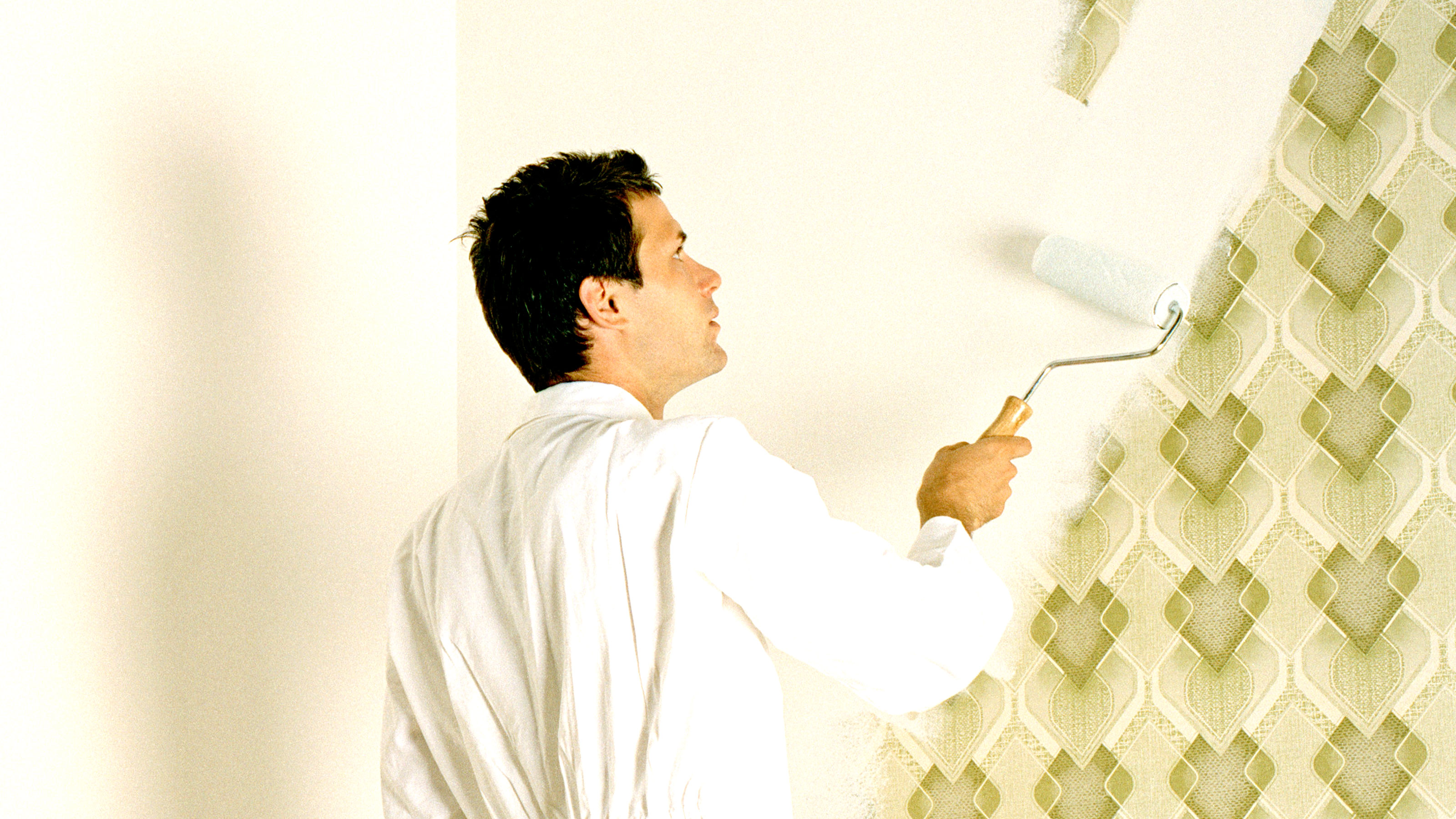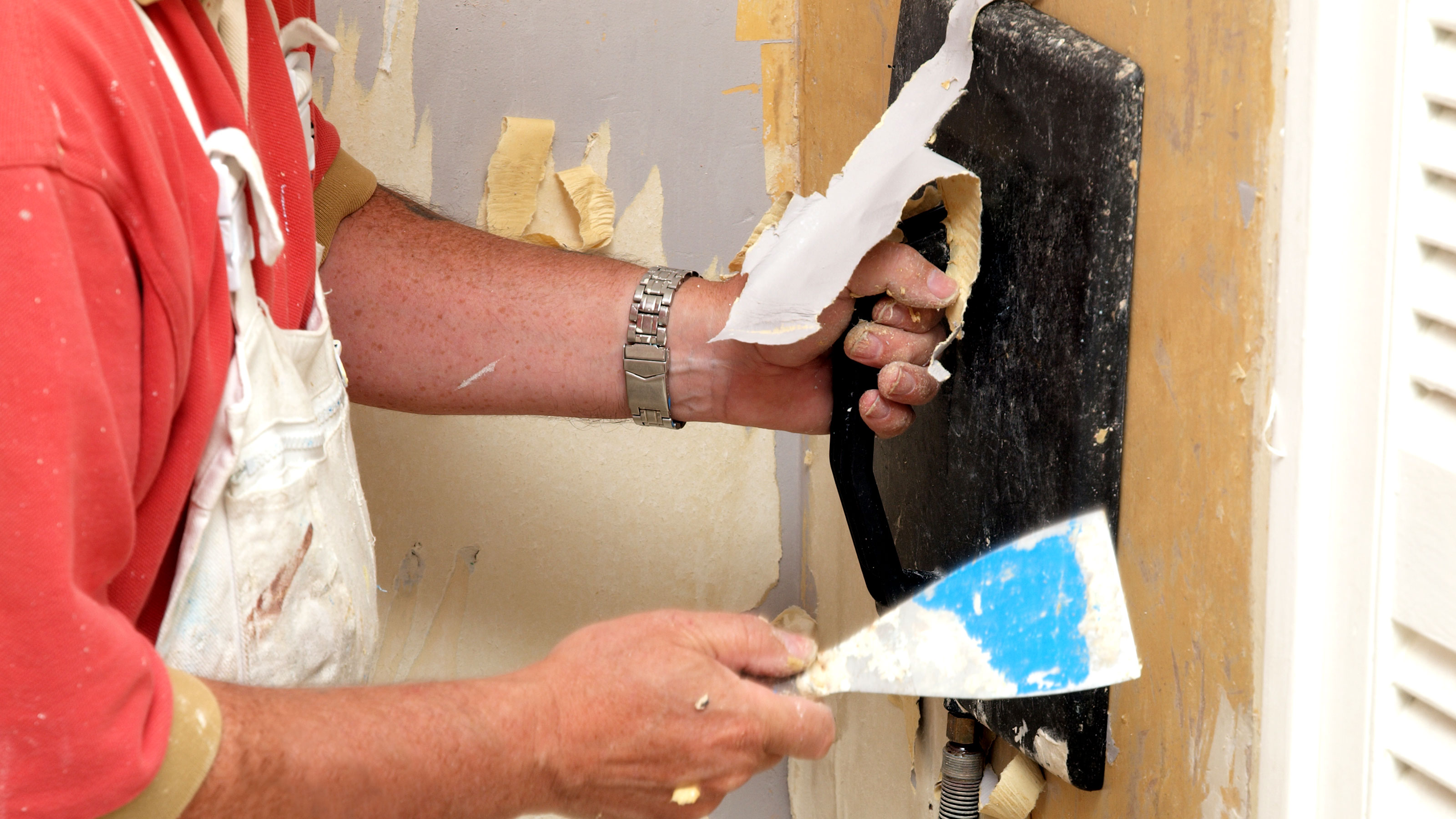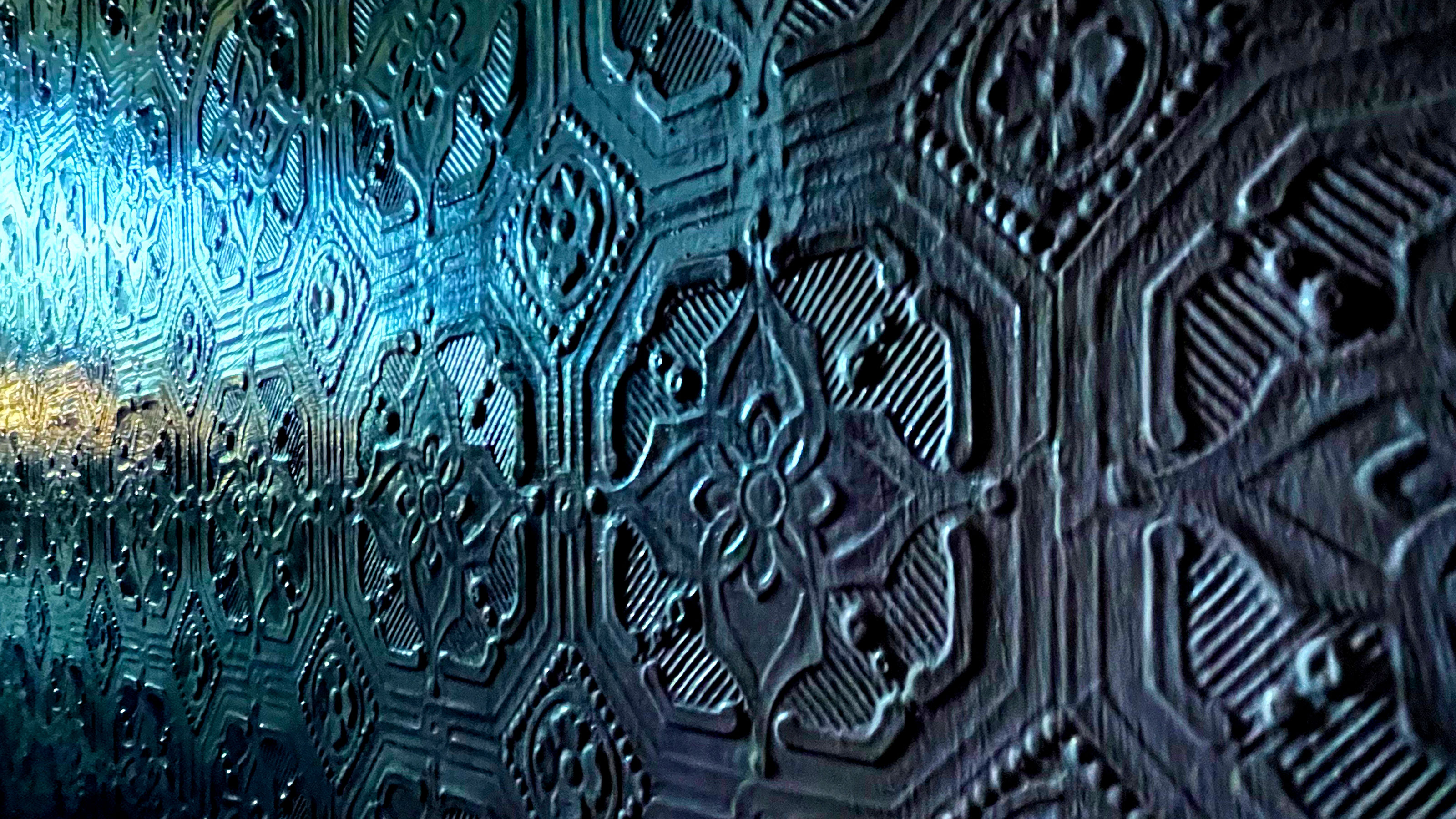Painting over textured wallpaper: how to do it and the tools you’ll need
Are you thinking about painting over textured wallpaper? Here we give you a quick and easy to follow step-by-step guide for all types of textured wallpaper

Painting over textured wallpaper can transform a room in hours. But it very much depends on what type of textured wallpaper you'll dealing with and what condition it is in. If it's in poor condition or has a vinyl coating you will need to get your prep done properly to get the best finish. If it's nice new Anaglypta textured wallpaper – or similar – you can head straight to painting.
The process for painting textured wallpaper is very similar to painting a wall or lining paper, but with a few subtle differences. You may need to involve a primer or undercoat to make sure that the top coat adheres properly. Or you might need a deep pile roller to get into all the nooks and crannies of the textured wallpaper.
Here we give you the lowdown on how to transform your textured wallpaper with a neat new contemporary finish.
Painting over textured wallpaper: the tools you’ll need
When painting textured wallpaper you will need the same set of tools as you would when painting a ceiling or a wall. So most DIYers should only need to get the paint they need for the job.
The main tools you'll need include:
- Paint
- Paintbrush
- Roller
- Roller extension pole (optional)
- Step ladder (optional)
- Paint tray
- Paint kettle (optional)
- Sugar soap
- Dust sheets
Should I paint over old wallpaper or remove it?
There’s no doubt that painting over wallpaper is much easier than removing it. It’s a single-step process that can be done in hours, while removing wallpaper is typically a three-step process that will take much longer.
But the condition of the wallpaper is the key component in the decision making. If it's in good condition and has only been painted a few times previously then painting is the obvious choice. You won’t have to worry about stripping wallpaper, cleaning up the mess and the inconvenience of a room being out of action for a few days.
"In addition, removing wallpaper in older homes could reveal walls which require replastering — a job which will cost, at the very least, a couple of hundred pound," says Homebuilding & Renovating Editor, Claire Lloyd.
On the flip side if the wallpaper is in poor condition and needs a lot of prep to get it ready for painting then it would be a good time to plan ahead and strip off the old wallpaper and put up new. This will be easier to paint, give you a good-looking, ‘as new’ finish and will be easy to refresh.

How to paint over textured wallpaper
Textured wallpaper will often come with a vinyl covering to protect it. But this makes it difficult to simply paint straight over with emulsion. Here we tell you how to get the best finish.
1. Repair and clean wallpaper
If painting over a textured wallpaper with a vinyl covering that has been up for a while you will need to repair and clean. Stick down any corners or seams that have lifted using a specialist adhesive and a seam roller.
Leave the adhesive to dry as instructed and then get a solution of warm water and sugar soap and wash down the wallpaper with a clean cloth without soaking the paper. Then use a clean cloth and clean warm water and wash down again to remove any sugar soap residue. Leave to fully dry.
2. Add a primer or undercoat
Get a two-inch brush and cut in at the ceiling, corners, around fixtures and skirting boards to create a border ready for the next stage. Next get a 9–inch roller, start in a top corner and work down and across in a V or W motion to get an even finish.
If your textured wallpaper has a deep pattern use a deep or medium pile roller sleeve to get into the grooves. Once you have finished go back and look over the wallpaper to see if there are any areas that have been missed. Use a brush to paint over any gaps to finish and leave to dry.
3. Add top coat
Now it's time to add your top coat. Follow the same process as the previous step but using your top coat i.e. emulsion. After one coat, leave to dry as instructed. Typically, you will need at least two coats – along with the timer/undercoat – to get a decent finish.
After the second top coat, take a look at the finish when dry. In some cases i.e. a dark colour being covered, you may need to add a third coat.
What is the difference between Anaglypta and textured wallpaper?
Anaglypta is a long established wallpaper brand that produces a selection of textured wallpapers including vinyl wallpapers. But it is also well known for its original textured wallpapers that can be emulsioned.
These are typically used to cover wall defects with a selection of simple textures such as Bark, Brooke and Clarendon. But they also have textured wallpapers that are suited to older homes and are great for helping bring your dado rail ideas to life.

Get the Homebuilding & Renovating Newsletter
Bring your dream home to life with expert advice, how to guides and design inspiration. Sign up for our newsletter and get two free tickets to a Homebuilding & Renovating Show near you.
Steve Jenkins is a freelance content creator with over two decades of experience working in digital and print and was previously the DIY content editor for Homebuilding & Renovating.
He is a keen DIYer with over 20 years of experience in transforming and renovating the many homes he has lived in. He specialises in painting and decorating, but has a wide range of skills gleaned from working in the building trade for around 10 years and spending time at night school learning how to plaster and plumb.
He has fitted kitchens, tiled bathrooms and kitchens, laid many floors, built partition walls, plastered walls, plumbed in bathrooms, worked on loft conversions and much more. And when he's not sure how to tackle a DIY project he has a wide network of friends – including plumbers, gas engineers, tilers, carpenters, painters and decorators, electricians and builders – in the trade to call upon.

